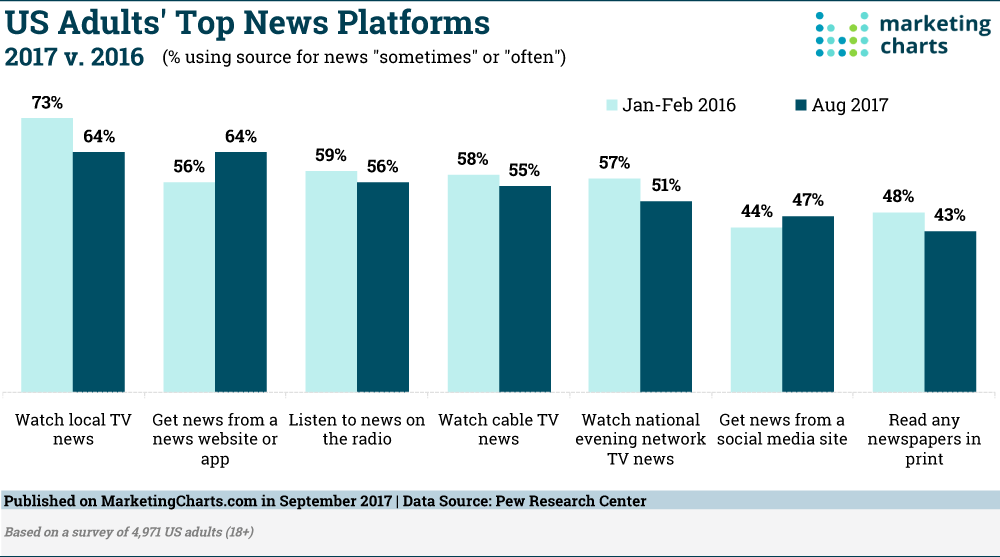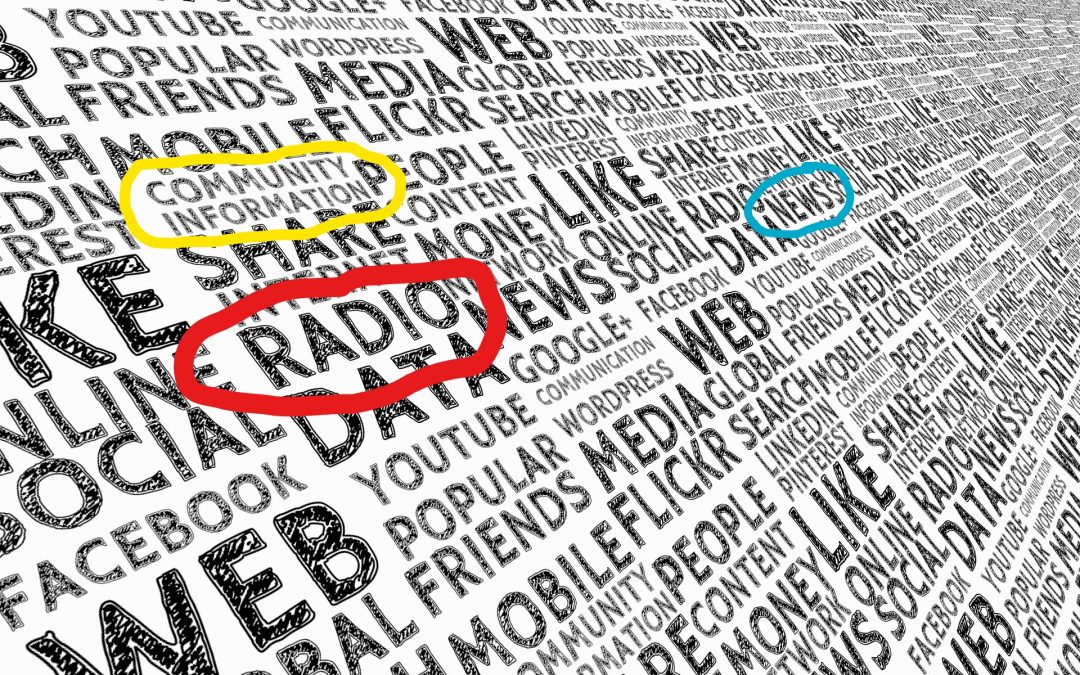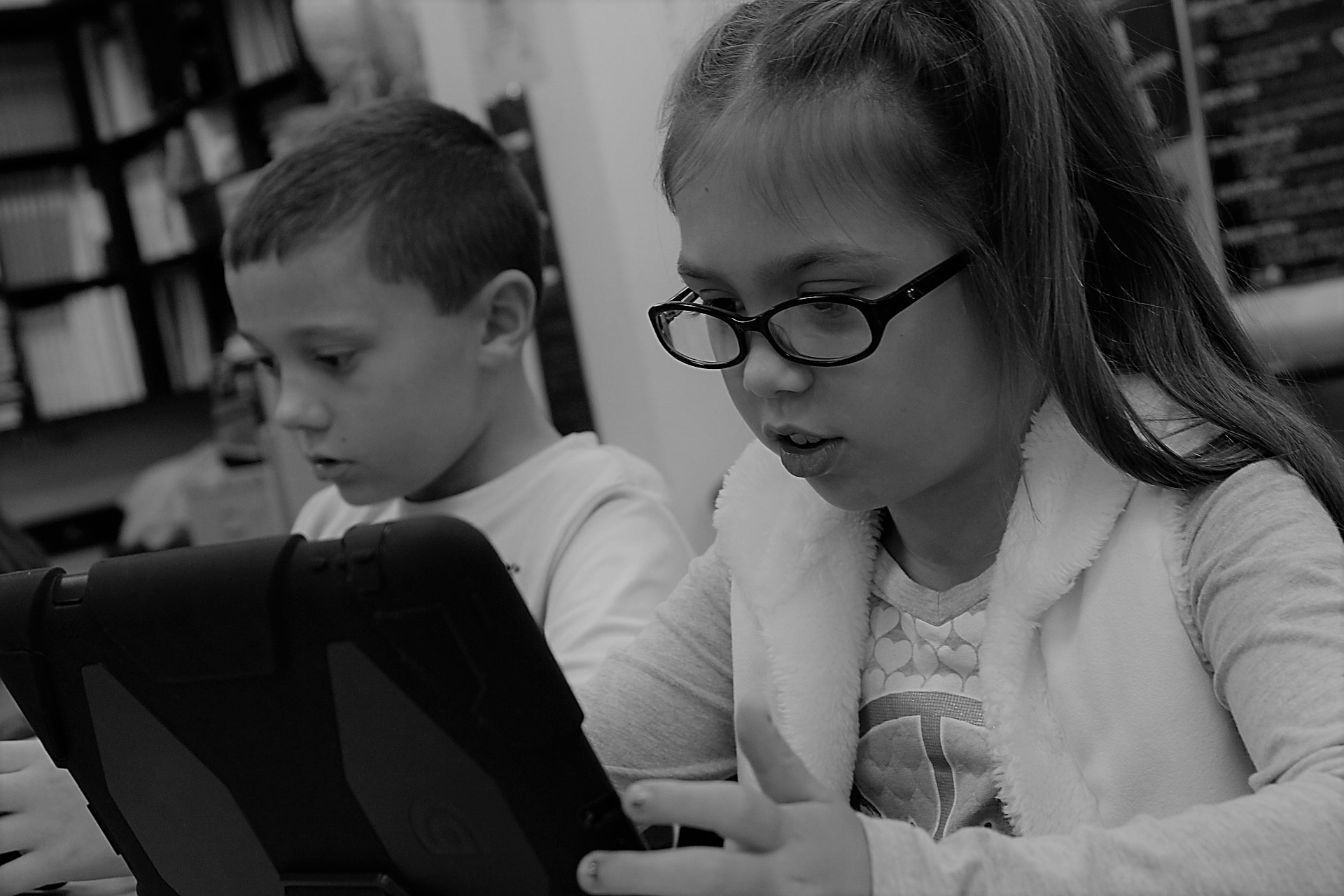
by Scott Howard | Sep 19, 2017 | Marketing and Advertising Insights, ScLoHo's Collective Wisdom, ScLoHo's Media, The Not-So-Secret Writings of ScLoHo, WOWO Fort Wayne Radio Advertising with Scott Howard
A new survey of nearly 5,000 Americans sheds some light on where we get our news.
Comparing 2017 to 2016, we see some slippage and some increases.

Not surprising to me is that the increases are related to our pocket computers, those devices you and I call our smartphones.
News Websites or Apps grew 8% in the past year and is now tied with Local TV which lost the most ground (7%)
Social Media grew slightly too by 3%.
I was happy to see that local radio news is still strong in the survey, as I work for WOWO radio, our local news talk radio station. There was another talk station in town but they switched format this month to rock music. And we have our local NPR affiliate that provides news and talk too, but has a fraction of the listenership that WOWO has.
(WOWO’s website also gets the most visits of all our Federated Media stations, company wide, so we are on top of that trend too.)
Also on the survey, was cable TV news like CNN, MSNBC, Fox News; national TV news like ABC, CBS and NBC; and print newspapers, but all showed year to year declines.
None of this is surprising to me. What does surprise me is the local businesses that continue to use some of these media for advertising. But I’ll talk about that some other day. I’ve written a couple stories recently about local news changes in the Fort Wayne area and also about the status of radio listenership locally. You can click on those links if you missed them.
Which reminds me, the phone book arrived this week. My wife took care of it before I got home. I found it in the recycling bin waiting to be hauled away on trash day.

by Scott Howard | Sep 13, 2017 | Marketing and Advertising Insights, ScLoHo's Fort Wayne, ScLoHo's Media, The Not-So-Secret Writings of ScLoHo, WOWO Fort Wayne Radio Advertising with Scott Howard
NewsTalk 1190 WOWO Radio in Fort Wayne, Indiana is going to be 100 years old soon. Despite the most recent doomsday report that AM and FM radio stations would be obsolete before WOWO hits 100, I’m here to present some real reasons that the report is both right and wrong.
Broadcast radio is struggling to remain relevant as consumers embrace streaming platforms, according to a groundbreaking study that examines the disruption to radio caused by digital services.
These trends are crippling radio, which is witnessing historic declines in its audience and its relevance to listeners and advertisers. To survive, radio must innovate, learn from other media, and take control of its path forward into the third decade of this century and beyond.
That’s the intro to a 30 page report that says radio stations like the ones I work for are going the way of the phone book. Here’s a direct link to the entire report if you want to really dig in.
A dozen years ago, I was making the same prediction. Music radio was going to be a thing of the past. At the time I worked with legendary Fort Wayne WXKE Radio Icon Doc West and Doc knew the answer to the problem of music radio stations losing listeners to streaming services and satellite radio stations. Live and Locally Relevant. That was the mantra that Doc used to stay at the top of the heap of radio personalities back then.
WOWO radio used to be a music station when I was a kid and the most listened to radio personality before Doc West was Bob Sievers. His morning program on WOWO had 90% of the available audience tuned in. Farmers for the farm reports, kids like me, waiting to hear the weather, well, actually the school closings and everyone else listened to Bob on WOWO to know what was going on. Bob and WOWO were Live and Locally Relevant.
My reason for predicting the demise of AM & FM radio back then was the digital age as auto manufacturers were adding internet to their vehicles. More options for drivers to listen to their favorite music. I knew it would be an evolving change, simply because it would take time for these internet connected cars to replace the older vehicles.

Your Car, a “radio on wheels”
But then something else has kicked in that I didn’t foresee. The Internet of Things.
The IoT as it is called is the interconnection of stuff via the web that we didn’t need to have connected to the web previously.
The ability for your phone to respond to voice commands was a preview of what we have now with Alexa and the other digital personal assistant devices that are becoming common place.
But back to my headline for this story:
Why WOWO Radio Will Outlast The Naysayers
WOWO radio and our sister stations at Federated Media are embracing the digital age. They were the first in Fort Wayne to jump in and offer the radio programming to listeners on what ever digital platform the listeners wanted. Then they went a step further and began producing content that goes beyond what you can get by listening to the AM & FM radio signals. Podcasts, Videos, and plenty of on-demand content that you and I can read, watch or listen to when we want, where we want.

Listen to what you want, when you want
Our music stations, in Fort Wayne including WMEE, K-105 and 98.9 The Bear have been Live and Locally Relevant for decades! WOWO Radio with our News and Talk format for the past 20 years has a couple of national talk shows in the middle of the day, but every 30 minutes, we have Live and Locally Relevant news updates. Fort Wayne’s Morning News with Charly Butcher starts the weekday and afternoons with the Pat Miller Program, bookend each weekday with Live and Locally Relevant programming.
In case you still need another antidote as to the importance of local media, during tragic events like Hurricane Harvey, it was the local Texas radio stations that were the dominate source of information. Television isn’t portable but radio is.
But what about the radio audience overall? Is it shrinking?
After the report from the naysayer, two more reports came out to counter his claims. You can read them here and here.
But what I care about and so do the businesses I work with who use WOWO Radio to advertise by inviting our listeners to become their customers, is what is the state of radio listenership in Fort Wayne Indiana?
I researched it for this story. I have access to the Eastlan radio surveys from 2013 thru today that measures radio listener habits every 6 months in Fort Wayne.
Between 2013 and 2017, the total number of people age 12 and older who listen to a radio station in Metro Fort Wayne has grown by 25,000.
Boom.
Mic Drop.
396,000 weekly listeners in the spring of 2013.
421,000 weekly listeners in the spring of 2017.
How’s WOWO doing? Every survey that I have access to (including before 2013) show that WOWO radio continues to lead the pack with over 100,000 listeners every week, and 98%+ are grown ups.
In about 8 or 9 years WOWO will be celebrating a century of service. Now is the right time to join the other advertising partners who benefit from being on WOWO. Contact me to find out how.

by Scott Howard | Sep 5, 2017 | Marketing and Advertising Insights, ScLoHo's Fort Wayne, ScLoHo's Media, The Not-So-Secret Writings of ScLoHo, WOWO Fort Wayne Radio Advertising with Scott Howard
Where do you get your local news? Is traditional media dead yet?
These two questions have been on my mind for quite awhile and then last month we learned that a Fort Wayne news institution was making a major change:
The News-Sentinel is ending distribution of its afternoon newspaper as it shifts to a digital platform, Fort Wayne Newspapers announced.
Subscribers will still be offered News-Sentinel content in the morning Journal Gazette, as part of a renewal of the two newspapers’ joint operating agreement.
I wasn’t surprised, but I was saddened. In my youth, I was a paperboy of the afternoon paper in Fort Wayne and had a fondness for the paper even though it has been years since I bought one.
The survival of two local daily newspapers in a city the size of Fort Wayne was only due to some planning decades ago that allowed the morning and afternoon newspapers that were independently owned to form a Joint Operating Agreement. This J.O.A. was limited to advertising revenue and kept the news and editorial staffs separate for each paper.
For the past dozen years, I have had access to publication numbers of the two newspapers because of my affiliation with the Radio Advertising Bureau and their access to the numbers reported to the Audit Bureau of Circulations that keeps track of this data.
In 1999, the afternoon paper had over 45,000 subscribers, and that number was in the 20 thousand range 10 years later. The last report I have access to listed a total of 12,000 weekly subscribers to the News-Sentinel back in 2014 and odds are they were less than 10 thousand last week.
This is not just a local phenomenon. The decline of printed daily newspaper circulation has been going on for decades with alternatives popping up online. Many papers moved their content online and used those numbers to boost their subscription numbers that they would report, but the revenue didn’t match up.
A few years ago, I had coffee with a young woman who was in charge of selling digital advertising for the Fort Wayne Newspapers and I remember my advice:
Your job is going to be to keep advertisers spending levels where they are today. The businesses are going to decrease their spending in the printed paper and you can help them stay by migrating those funds into digital products.
I laid out a 5 year plan and at the end of those 5 years, 90% of an advertisers budget was being spent in digital media with the remaining 10% on a souvenir collectors edition of the printed newspaper. She wasn’t allowed to follow my advice and now she works elsewhere.
A couple years later, after I was interviewed to become the Digital Advertising Sales Manager for the Fort Wayne Newspapers they decided to eliminate the position and combine the sales departments of both digital and print.
So where do we as consumers get our news? I still see people reading the morning paper in Fort Wayne on the days I visit a coffee shop. But those numbers have been declining too.
Fort Wayne has over 20 radio stations and a number of TV stations. The television stations that offer local news include a CBS, ABC, NBC and Fox affiliate. According to the ratings, the CBS station has double the audience for local news over the ABC station and the NBC stations audience didn’t hardly register in the latest survey. The Fox station has one newscast at a time that no one else does (10 pm).
On the radio side, WOWO Radio is the only station with a fully staffed full time news staff that does live local news every 30 minutes from 5am until 6pm weekdays, and more frequently between 5 and 9am. Yes, there are other stations that offer local news, but not all day and not to the degree that WOWO does. WOWO has additional news sources and providers in neighboring communities from our co-owned stations in Warsaw, Elkhart, South Bend and Goshen along with “news-partners” at local print and TV stations.
Long ago, WOWO’s news slogan was, “Where you go when you need to know”, and as a News Talk formatted radio station for over 20 years, the commitment remains. WOWO recognized that where we get out news continues to evolve. Nearly every local news story is found on WOWO.com.
News and Weather alerts are sent via text to subscribers. Updates on Facebook and Twitter are posted online too. WOWO is owned by Federated Media and WOWO supplies the news to our sister stations in Fort Wayne including WMEE, 98.9 The Bear & K-105.
Having worked for a couple of the other radio station groups, they simply don’t have a news department like WOWO & Federated Media. When I was there, it was more like grab the morning newspaper and pull a couple of headlines to rewrite and call it a newscast, style of news. And to be fair, there are two radio stations on the non-profit part of the FM dial that have news departments of varying degrees.
News is not the only reason we have traditional media. My original two questions when I started this were:
Where do you get your local news? Is traditional media dead yet?
Individual TV shows on the major broadcast networks can still find a healthy sized audience, but those networks are not filling all their prime time weekly slots with new shows. Lot’s of repeats will air on Friday and Saturday nights, I’ve observed. Broadcast TV is trying to adjust to the on-demand world of entertainment we have now.
Music radio stations have been battling alternatives for decades and usually are still winning if they are locally connected to their listeners and their community. The Radio Advertising Bureau still tells us that over 90% of folks age 13 and older listen to a radio station every week.
From a business standpoint, you as a business person need to understand that there are still some very valuable traditional media sources that you can use to advertise with. It’s just not the same as it was 30 years ago or even 10 years ago and it may require someone to help guide you to make smart decisions on where to advertise.
That’s where I can help. I make recommendations beyond what I can sell to you myself, when I see an opportunity that you should take advantage of. Want help? Let’s talk.

by Scott Howard | Jul 30, 2017 | Marketing and Advertising Insights, ScLoHo's Collective Wisdom, ScLoHo's Media
Television viewing habits continue to shift. Have your advertising expenditures shifted too? It’s time to examine the trends for your business.
200 Channels and there is nothing on
The TV shift is real in 2017 and will only continue in the years ahead. Television viewing habits have been changing for years and as consumers, we really don’t care how we get our video content.
But for businesses that have relied on television advertising to be the lifeblood of their business, they may find themselves on life support unless they wake up and make some changes.
Saturday night my wife and I were taking care of 3 young ones, grandkids ages 8 months to 4 years old.
The parents are around 30 years old. Neither watch local television. Disney Junior is the channel of choice when the boys are up. When the parents get to watch the TV in the family room, they are selecting something from Netflix.
Saturday night after the boys went to sleep, my wife and I were flipping through the line up and finally settled on HGTV for a little while, not because we wanted to watch it, but because of all the options that were coming up, it was the most viewable. No offensive language in case we were visited by the grandkids coming downstairs for a snack and nothing that required an investment of uninterrupted time like a movie.
Granted my wife and I are Baby Boomers and we grew up with local television and later cable networks, but the past few years the networks decided that Friday and Saturday nights were not worth programming and they usually fill the prime time hours with reruns or fluff.
I’ve got a story I wrote about Baby Boomers, media and marketing coming up in a couple of days that talks about how to effectively reach us and invite us to spend our money with you and it has some information from Mediapost that should be eye-opening.
Right now, I have another Mediapost article in front of me that has some disturbing news for the television industry and if you are spending money advertising on TV, read on…
It’s titled: Good News, Bad News For TV, Video And Advertisers
The author went beyond the short term, headline grabbing information and dug through 3 years of data and here’s what he wrote:
Good News for Traditional TV – Adults spend more than five times as much time watching traditional TV than watching video on all other screens combined. Those under 25 spend about twice as much time with traditional TV than with other screens.
Bad News For Traditional TV – Two years ago, adults spent 10 times as much time, while those under 25 spent four times as much time with traditional TV. The gap between traditional TV and video on all other screens has been cut in half over the past two years — and continues to narrowing dramatically. This is also the first time I can recall when traditional TV viewing was lower in the first quarter than the fourth quarter of the same season.
In summary:
- the big screen is still watched more more than our small screens (phones, tablets and laptops).
- the drop in viewership of traditional TV, both cable and local has accelerated faster than nearly any other advertising medium in history in just the past two years. I can not think of any other advertising medium that has had a 90% decrease that survived.
- the future is not very bright for traditional TV. While the quotes above mention the under 25 year olds, I also know that the 25 to 40 year olds are following that same pattern of ignoring the TV networks, especially the local channels as I’ve witnessed in my own family.
Here’s more from the Mediapost story:
-
Good News For Netflix, Hulu, Amazon Prime
-
Good News For Mobile Video
-
Bad News For TV Advertisers – DVR and time-shifted viewing remains solid, particularly among traditional TV’s main audience —viewers 35+. But live viewing, which is the only way advertisers can know who is exposed to their commercials, is declining sharply, particularly among younger viewers.
Now where I live, in a conservative city in the midwest, Fort Wayne, Indiana, change is a little slower than on the east or west coasts of our country. That may be why business are continuing to use the local television stations, even when they have challenges with justifying their return on investment.
I met with a local business owner recently that told me he spent over $50,000 for two years advertising on of our more popular local TV stations and could only track one job, worth a few hundred bucks from that expenditure.
You probably noticed changes in your viewing habits over the recent past. I noticed a few years ago when the Emmy awards were featuring more and more programs that were not on ABC, CBS, FOX or NBC and that evolved to shows that were not even on cable. Netflix, Hulu and Amazon received 125 nominations for the next awards. ABC, CBS & NBC together only have 115.
UPDATE: After I wrote and published this article, a couple more articles arrived in my email.
The young adults time spent watching TV is dropping fast.
 You will find more statistics at Statista
You will find more statistics at Statista
So what are they watching? Take a look.
 You will find more statistics at Statista
You will find more statistics at Statista
The viewership habits have been changing for some time. Pretty soon the businesses that advertise on traditional TV will also change. Because the TV Shift is Real.

by Scott Howard | Jul 12, 2017 | Marketing and Advertising Insights, ScLoHo's Media, The Not-So-Secret Writings of ScLoHo
Today, a common sense approach to buying advertising that nearly anyone can figure out. You can out smart the media buyers at the advertising agencies if you simply consider How to Use Habits to Buy Advertising.
I used to work with media buyers from advertising agencies that were taught how to crunch numbers from data collection and rating services and figure out the perfect number of ads to run to come up with a winning formula.
Now they don’t even have to crunch those numbers, it’s all done for them with proprietary software that does the math and spits out the formulas.
However those kinds of systems are flawed. And many media buyers don’t know the process or they wouldn’t use the systems.
I’m going to delve into the rating systems of radio and television since that is the data I have access to. Nearly any form of media marketing including digital, print and well, you name it have similar complicated systems that are supposed to be better than what you and I can come up.
Those systems are flawed because they put too much emphasis on questionable numbers and they would routinely tell me things like, I need to place 19 commercials between 3 and 7pm to have the same results as 2 commercials between 10am and 3pm on a certain radio station.
Bizarre stuff, really and I’m not going to bore you with the details of how the software came up with crazy stuff like that.
But I’m going to show you how to beat these systems and be smart.
We are creatures of Habit.
Think about the last few days. You have your workday morning routine before you leave the house. You have your workday evening routine before you doze off at night.
Pretty predictable right?

We all follow routines
Your workday has certain routines too, I bet. Expand this thinking about routines and you’ll see patterns of media and advertising consumption based on our habits.
The key is to understand the habits of the types of people you want to reach with your advertising and then place your advertising messages where and when those people will see or hear them.
The advertising salesperson should be able to tell you something of value about the audience or readership of their advertising medium. Stuff like age, income, and other useful demographics to see if there is a connection between them and you.
Once you determine it could be a good fit, then you need to figure out how many ads and where exactly they should be placed. We call this Reach and Frequency and I’ll share more about this in the future.
But for now, the take away is that you can be pretty smart about your advertising by simply thinking about the routines of your current and potential customers. Armed with that knowledge, you can Use Habits to Buy Advertising.
Want help? Reach out to me.

by Scott Howard | May 18, 2017 | Marketing and Advertising Insights, ScLoHo's Media, ScLoHo's Web World, The Not-So-Secret Writings of ScLoHo, WOWO Fort Wayne Radio Advertising with Scott Howard
About 18 months ago I wrote a list of some of the advertising options I offered as a member of the WOWO Radio Advertising Sales Team.
Time for a fresh spin and update and if you want to listen to the podcast version instead, click here or scroll down to the end of this article.
Today let’s cut to the chase of what I do and why we should talk…
How Scott Howard Can Help You Invite People To Give You Money would be the title, but I prefer not talking about myself in the third person.
How I Can Help You Invite People To Give You Money is more my style.
On the surface, I sell radio advertising on WOWO Radio in Fort Wayne, Indiana which is pretty cool.
Some people I sell ads to just want that. I want to buy some radio commercials, they say. That’s it, nothing more, just tell me how much it will cost and let’s get to work.
I can do that and I will do that if that is really what they want. It all depends on the person at the other end.
If they are a media buyer or marketing director for a big company and they know what they are doing with advertising and marketing, then I’ll give them what they want with some insider knowledge about the characteristics of the WOWO audience.
However 90% of the time, the real issue is not that simple.
Business owners want customers and they are willing to do almost anything, including having a guy dress up in a dirty chicken costume, standing at the side of the road, waving at passing cars just to attract attention in the hopes that some of those people will pull over and buy something. If you missed that story, here’s a link.
Radio advertising on WOWO is a different animal than radio advertising on most other stations. Why?
WOWO is a news/talk formatted radio station and most of the others are music formatted radio stations. Listeners to news/talk are less irritated by commercials than music station listeners for one. I also have more options and opportunities to create a bond between the listeners and the local personalities on WOWO and I can leverage that bond to include the businesses that advertise on WOWO.
One day I’ll dig further into how that works, but after 3 1/2 years as a WOWO insider, I have seen and heard some amazing things pertaining to the effectiveness of WOWO radio ads that blows me away.
Remember, the topic today is: How I Can Help You Invite People To Give You Money.
We’re not limited to just the people who listen to the radio commercials on WOWO because our parent company, Federated Media has also invested in the digital world of advertising and marketing too with our Federated Digital Solutions division.
Honestly, I took a skeptic stance at our digital division when I joined a few years ago because I have experience in the online world, both in website design and development and the social media side too.
I wanted to make sure that anything I offered was the best for the investment spent for the companies I was talking with. And I have discovered some more pretty cool things we offer in the digital world that allow me to Help You Invite People To Give You Money.
On the digital side, I am running campaigns that reach across the country and some are pinpointed to specific cities that are beyond the reach of WOWO Radio, but are targeted to the right people in the location that my advertising partners wants to invite to give him money.
I have the success stories to back this up too whether it’s radio or digital or a combination.
One thing I offer that is unique among my WOWO Radio sales team coworkers is the connections to others that can help with your business marketing outside of what you can buy from me. My connections seem to go pretty deep and wide and beyond just marketing services but into other aspects of running your company.
Oh and there is another category of marketing tools I have at my finger tips that can actually create a list of Hot Leads, people who have given us their contact information because they have Opted In to be contacted and yes, they want to give you money.
By the way the whole premise of people giving you money in this article is not necessarily money for nothing, it’s people who want to buy what you have to sell.
Ready to see how this could work for you?
Want to see specifically How I Can Help You Invite People To Give You Money?
Let’s talk.












